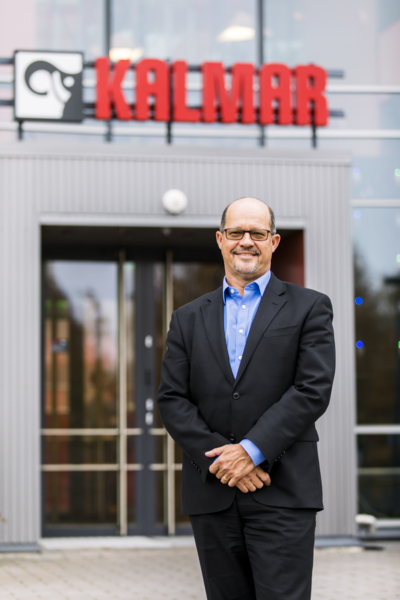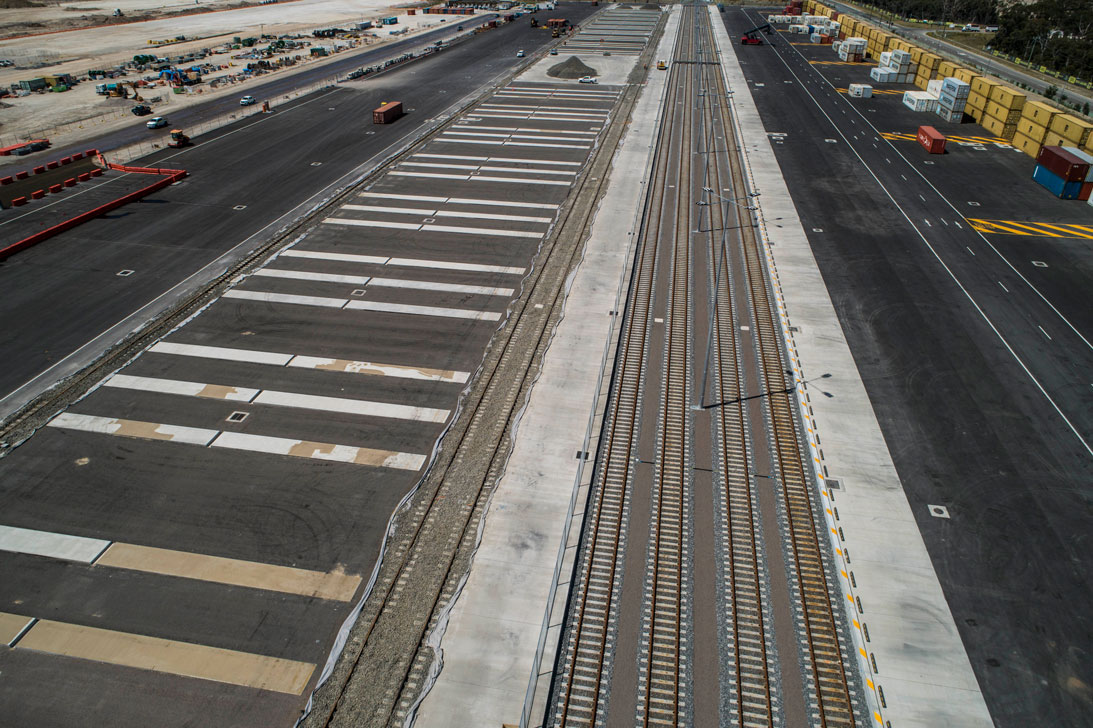
OneTerminal powers Australia's largest logistics development at Moorebank Logistics Park
Kalmar and Navis are helping logistics services provider Qube build a fully automated intermodal terminal that dramatically boosts logistics efficiency for major retailers and improves the eco-efficiency of cargo transport for the State of New South Wales.
Qube is Australia’s largest integrated provider of import and export logistics services, operating in over 135 locations across Australia, New Zealand and South-East Asia with a workforce of more than 6,500 employees and a market capitalisation in excess of $A5B.
Qube is currently working on a transformational intermodal project in South-Western Sydney. The 243-hectare Moorebank Logistics Park (MLP) will ultimately see the development of up to 850,000 square metres of warehousing as well as two intermodal rail terminals. Set to become Australia’s largest freight infrastructure project, Moorebank Logistics Park will incorporate the latest fully automated freight handling technology supplied as a OneTerminal solution.
Connecting sea, land and rail
 MLP is situated in a strategic location, with easy access to national highways servicing key freight corridors in New South Wales. Rail connections to the national rail network are supplemented by a dedicated freight rail link to the terminal of Port Botany. Fast and smooth interfacing between shipping, road and rail transport is crucial to the operational concept, and the intermodal terminal at the site features a unique fully automated concept with eight cantilever rail-mounted gantry cranes (RMGs) and four automated stacking cranes (ASCs).
MLP is situated in a strategic location, with easy access to national highways servicing key freight corridors in New South Wales. Rail connections to the national rail network are supplemented by a dedicated freight rail link to the terminal of Port Botany. Fast and smooth interfacing between shipping, road and rail transport is crucial to the operational concept, and the intermodal terminal at the site features a unique fully automated concept with eight cantilever rail-mounted gantry cranes (RMGs) and four automated stacking cranes (ASCs).
The innovative terminal concept makes extensive use of Kalmar hybrid FastCharge AutoStrad™ for horizontal transportation of containers. What’s more, the flexible and unique solution includes the provision of warehouse roof top solar cells, making it possible to operate the machines with solar power, or alternatively they can run with just diesel, based on what is the best operational solution. Two container lanes for the straddle carriers are located in the RMG cantilever area, and the machines handle the loading and unloading of containers on-road trucks at nine truck grids. Additionally, the Automated Straddle Carriers take care of fully automated container delivery to the warehouses in the logistics park.
The OneTerminal solution is delivered as an integrated system that combines Kalmar equipment and Navis N4 software. The assembly of the first cranes will start on site in January 2020, and the terminal is scheduled to reach full-scale automated operation in approximately 3.5 years. The Kalmar solution also includes a wide range of support equipment, from access control and auto-calibration systems to FastCharge charging stations and on-site navigation infrastructure.
Adding value with automation
"Moorebank Logistics Park is a great example of how automation can enable new kinds of high-value warehousing in the retail sector," says Greg Pauline, Director Infrastructure and Property, Qube Holdings. "Our first tenant at the precinct is a leading retail chain that originally requested 45,000 m2 of warehouse space and 20,000 m2 hardstand area. As a result of the automation and associated connectivity, the customer has established a smaller footprint of 37,860m2 with no additional container storage, resulting in significant cost savings.
MLP is also “pioneering innovative safety and sustainability initiatives across the project. The fully automated transport of containers directly to warehouse loading doors improves occupational safety, and the retail warehouse facility has a 3 MW solar panel array that is the largest single-roof solar installation in Australia. "In the future, we will generate electricity on-site for our tenants," notes Pauline. "By enabling fast rail connectivity from Port Botany, the Park is helping reduce road truck emissions by more than 111,000 tons of CO2 equivalent annually. This equates to removing 3,000 trucks off the road per day", he added.
The Kalmar automation solution directly supports MLP's business objectives – and those of the terminal's tenants and users. "It's been very pleasing that we can attract high-volume demand tenants to our site, and prove to them that with automation they can run their operations with a significantly more efficient facility meeting their expectations and deliver major cost savings," Pauline says. "Compared with existing road transport from the terminal of Port Botany, we can now provide certainty that containers leave from a ship and arrive at the warehouses at MLP in a single day, instead of four days as in the past. For retailers, this is a massive competitive advantage."
"We can now provide certainty that containers arrive at the warehouses in a single day."
Building on trust
A terminal design project of this scope requires flexibility and open thinking from all parties involved. "You start out with certain assumptions about the project, but you also have to be ready to adapt as you gain more information along the way," says Greg Pauline. "For example, we had originally planned for a terminal concept based around Kalmar AutoShuttles, but it turned out that Automated Straddle Carriers were a better match for our solution. It was very pleasing to me that the development team and Kalmar were able to work the problem and deliver a better solution. An unexpected side benefit of the change in horizontal transportation equipment was that it actually simplified the navigation infrastructure of the machines due to the greater height of the straddles."
Qube has a long history of collaborating with Kalmar, particularly through Australia's leading container terminal operator Patrick Terminals, which is 50% owned by Qube.
"With automation, you have to get it right the first time, so it's important to select Original Equipment Manufacturers (OEMs) with whom you have a long – standing relationship. We are comfortable with the capabilities of Kalmar and the evolutionary systems and equipment which push the boundaries with a revolutionary approach. This goes to prudent risk management whilst also delivering a world first fully integrated autonomous equipment serviced logistics park for Qube.notes Pauline.
"Partnering with Kalmar as our technology partner for the Moorebank Logistics Park project was an important decision. We have been pleased with the support and commitment that they have offered us on this terminal design and construction project to date. It all comes down to adopting a problem solving approach, building a strong collaboration and ensuring a holistic approach to this very important facet of the project.”."

Related articles
Further reading
Subscribe and receive updates in your email
Suscríbase a nuestras publicaciones

